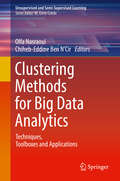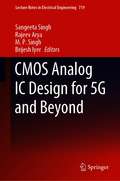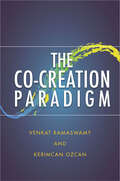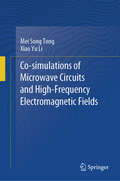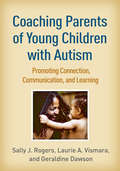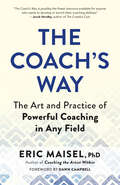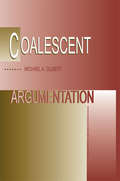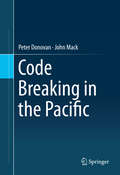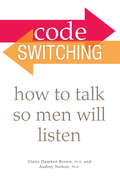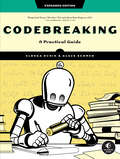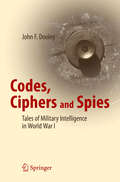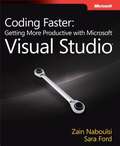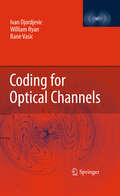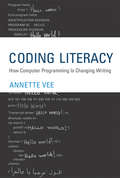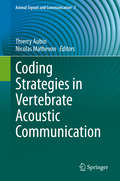- Table View
- List View
Clown World: Four Years Inside Andrew Tate's Manosphere
by Jamie Tahsin Matt Shea'This gripping book is destined to become THE book about Andrew Tate' Jon Ronson'A fascinating and disturbing investigation' Ian HislopThe behind-the-scenes story of a four-year investigation into Andrew Tate, exploring how a failed reality TV star turned accused organised criminal managed to become one of the most famous influencers in the world.In 2022, Andrew Tate went from a little-known kickboxer and failed reality TV star to a lifestyle icon for legions of men and boys, and a figure that would define a new era of misogyny. Tate started the year as a fringe internet celebrity, but by August he was the most googled man in the world. In that same month, Matt Shea and Jamie Tahsin gained access to his Bucharest compound and infamous War Room, making a documentary that would result in the first women coming forward to accuse him publicly of sexual and physical violence. Tate would end the year in a Romanian jail, facing charges of human trafficking, rape and being part of an organised crime group. But the investigations wouldn't stop there.Part Gonzo journalism, part masculinity rabbit hole, this book takes you on Shea and Tahsin's journey to reveal the dark secrets of Andrew Tate, the machine that brought him here, and the ideology he has unleashed on a generation of young men.'A sobering, strange and eye-opening look into the toxic manosphere. It should be required reading for anybody worried about the rise of incel culture and Andrew Tate' Zing Tsjeng'Rarely have I read anything so politically important that's also so gripping' Zoe Williams
Clown World: Four Years Inside Andrew Tate's Manosphere
by Jamie Tahsin Matt Shea'This gripping book is destined to become THE book about Andrew Tate' Jon Ronson'A fascinating and disturbing investigation' Ian HislopThe behind-the-scenes story of a four-year investigation into Andrew Tate, exploring how a failed reality TV star turned accused organised criminal managed to become one of the most famous influencers in the world.In 2022, Andrew Tate went from a little-known kickboxer and failed reality TV star to a lifestyle icon for legions of men and boys, and a figure that would define a new era of misogyny. Tate started the year as a fringe internet celebrity, but by August he was the most googled man in the world. In that same month, Matt Shea and Jamie Tahsin gained access to his Bucharest compound and infamous War Room, making a documentary that would result in the first women coming forward to accuse him publicly of sexual and physical violence. Tate would end the year in a Romanian jail, facing charges of human trafficking, rape and being part of an organised crime group. But the investigations wouldn't stop there.Part Gonzo journalism, part masculinity rabbit hole, this book takes you on Shea and Tahsin's journey to reveal the dark secrets of Andrew Tate, the machine that brought him here, and the ideology he has unleashed on a generation of young men.'A sobering, strange and eye-opening look into the toxic manosphere. It should be required reading for anybody worried about the rise of incel culture and Andrew Tate' Zing Tsjeng'Rarely have I read anything so politically important that's also so gripping' Zoe Williams
Clustering Methods for Big Data Analytics: Techniques, Toolboxes and Applications (Unsupervised and Semi-Supervised Learning)
by Olfa Nasraoui Chiheb-Eddine Ben N'CirThis book highlights the state of the art and recent advances in Big Data clustering methods and their innovative applications in contemporary AI-driven systems. The book chapters discuss Deep Learning for Clustering, Blockchain data clustering, Cybersecurity applications such as insider threat detection, scalable distributed clustering methods for massive volumes of data; clustering Big Data Streams such as streams generated by the confluence of Internet of Things, digital and mobile health, human-robot interaction, and social networks; Spark-based Big Data clustering using Particle Swarm Optimization; and Tensor-based clustering for Web graphs, sensor streams, and social networks. The chapters in the book include a balanced coverage of big data clustering theory, methods, tools, frameworks, applications, representation, visualization, and clustering validation.
CMOS Analog IC Design for 5G and Beyond (Lecture Notes in Electrical Engineering #719)
by Sangeeta Singh Rajeev Arya M. P. Singh Brijesh IyerThis book is focused on addressing the designs of FinFET-based analog ICs for 5G and E-band communication networks. In addition, it also incorporates some of the contemporary developments over different fields. It highlights the latest advances, problems and challenges and presents the latest research results in the field of mm-wave integrated circuits designing based on scientific literature and its practical realization. The traditional approaches are excluded in this book. The authors cover various design guidelines to be taken care for while designing these circuits and detrimental scaling effects on the same. Moreover, Gallium Nitrides (GaN) are also reported to show huge potentials for the power amplifier designing required in 5G communication network. Subsequently, to enhance the readability of this book, the authors also include real-time problems in RFIC designing, case studies from experimental results, and clearly demarking design guidelines for the 5G communication ICs designing. This book incorporates the most recent FinFET architecture for the analog IC designing and the scaling effects along with the GaN technology as well.
CMOS-Compatible Key Engineering Devices for High-Speed Silicon-Based Optical Interconnections (Springer Theses)
by Jing WangThis book discusses some research results for CMOS-compatible silicon-based optical devices and interconnections. With accurate simulation and experimental demonstration, it provides insights on silicon-based modulation, advanced multiplexing, polarization and efficient coupling controlling technologies, which are widely used in silicon photonics. Researchers, scientists, engineers and especially students in the field of silicon photonics can benefit from the book. This book provides valuable knowledge, useful methods and practical design that can be considered in emerging silicon-based optical interconnections and communications. And it also give some guidance to student how to organize and complete an good dissertation.
Co-Creation in der Creator Economy: So können Content Creators ihre Community an ihre Inhalte binden (essentials)
by Markus H. Dahm Johannes HeydenreichDieses essential wirft einen Blick auf die zunehmende Bedeutung von gemeinschaftlicher Kreation in der aufstrebenden Creator Economy und gibt Content-Erstellern wertvolle Einblicke und konkrete Ratschläge, wie sie durch die Zusammenarbeit mit Fans und Followern nicht nur die Arbeitslast teilen, sondern auch eine unterstützende Gemeinschaft aufbauen können. Das Buch analysiert erfolgreiche Co-Creation-Modelle, bei denen Content-Verfasser Inhalte gemeinsam entwickeln und dabei von gemeinsamen Vermarktungsstrategien und Monetarisierungsansätzen profitieren.
The Co-Creation Paradigm
by Kerimcan Ozcan Venkat RamaswamyA fundamental shift is underway that will change how we conceive of value. In an era of increasing interconnectedness, individuals, as opposed to institutions, stand at the center of value creation. To adapt to this tectonic shift, organizations can no longer unilaterally devise products and services. They must engage stakeholders#151;from customers and employees to suppliers, partners, and citizens at large#151;as co-creators. Co-creation guru Venkat Ramaswamy and Kerimcan Ozcan call for enterprises to be mindful of lived experiences, to build engagement platforms and management systems that are designed for creative collaboration, and to develop "win more-win more" strategies that enhance our wealth, welfare, and, well-being. Richly illustrated with examples of co-creation in action, The Co-Creation Paradigm provides a blueprint for the co-creative enterprise, economy, and society, while presenting a conceptual framework that will guide organizations across sectors in adopting this transformational approach. Challenging some of our most deeply held ideas about business and value, this book outlines the future of "business as usual. "
Co-simulations of Microwave Circuits and High-Frequency Electromagnetic Fields
by Mei Song Tong Xiao Yu LiThis book aims to provide many advanced application topics for microwave circuits and high-frequency electromagnetic (EM) fields by using advanced design system (ADS) and high-frequency structure simulator (HFSS) as simulation platforms. In particular, it contains the latest multidisciplinary co-simulation guidance on the design of relevant components and devices. Currently, the circuit/field design and performance analysis and optimization strongly rely on various kinds of robust electronic design automation (EDA) software. RF/microwave engineers must grasp two or more types of related simulation design software. ADS by Keysight and HFSS by Ansys are the representative for circuit simulations and for field and structural simulations of microwave devices, respectively. At present, these two types of software are widely used in enterprises, universities, and research institutions. The main purpose of this book is to enable readers, who are interested in microwave engineering and applied electromagnetics, to master the applications of these two tools. It also helps readers expand their knowledge boundaries behind those types of software and deepen their understanding of developing interdisciplinary technologies by co-simulations. The book is divided into three parts. The first part introduces the two latest versions of ADS and HFSS and helps readers better understand the basic principles and latest functions better. It also advises how to choose appropriate simulation tools for different problems. The second part mainly describes co-simulations for high-frequency EM fields, microwave circuits, antenna designs, EM compatibility (EMC), and thermal and structural analyses. It provides guides and advices on performing co-simulations by ADS and HFSS incorporated with other types of software, respectively. The last part narrates the automation interfaces and script programming methods for co-simulations. It primarily deals with the Advanced Extension Language (AEL), Python Data Link (PDL), and MATLAB interface in ADS. For HFSS, it discusses VBScript, IronPython scripting, and Application Programming Interface (APIs) based on MATLAB. Each topic contains practical examples to help readers understand so that they can gain a solid knowledge and skills regarding automated interfaces and scripting methods based on these kinds of software. Concisely written in combination with practical examples, this book is very suitable as a textbook in introductory courses on microwave circuit and EM simulations and also as a supplementary textbook in many courses on electronics, microwave engineering, communication engineering, and related fields. As well, it can serve as a reference book for microwave engineers and researchers.
Coaching de oratória
by Miguel D'AddarioUm livro ideal para quem procura uma transformação face aos seus medos, aplicando o Coaching em práticas de oratória, conseguindo o impulso individual, a superação do objetivo, e sentindo-se incentivado a confrontar de cada vez que tem de se dirigir a um auditório; tanto para os profissionais, como para estudantes, advogados, docentes, funcionários, académicos, ou simplesmente para quem pretende aprender a desenvolver-se sem medos face a um público determinado.
Coaching for High Performance
by Vivette PayneCoach employees to ensure maximum performance, motivation and retention. Following a seven-step coaching process, Coaching for High Performance gives managers the tools to help their people excel at their jobs and meet competitive challenges with confidence. This book teaches managers how to communicate performance expectations, assess employee skill levels, establish the purpose of coaching, and agree on a coaching contract. Managers will learn the critical skills needed to conduct coaching conversations, adapt one’s coaching style to fit changing situations, and create a coaching plan. Readers will learn how to: • Establish the mission and role as a coach • Deliver feedback in any situation • Use coaching skills to motivate and retain employees • Coach employees across generations and throughout the employment life cycle • Enhance team performance and channel conflict constructively • Handle difficult coaching situations with insight and skill
Coaching Parents of Young Children with Autism: Promoting Connection, Communication, and Learning
by Geraldine Dawson Sally J. Rogers Laurie A. VismaraA growing body of evidence supports the benefits of high-quality parent interventions for building social and communication skills in 0- to 5-year-olds with autism spectrum disorder (ASD). How can clinicians coach parents to effectively incorporate learning opportunities into daily routines at home? From preeminent experts, this practical book explores the role of the coach and reviews the "whats," "whys," and "how-tos" of successful collaboration with parents. Topics include structuring coaching sessions, identifying children's needs, facilitating playful engagement, and deepening parents' understanding of how they can boost skills development during everyday activities. Seventeen reproducible handouts and forms include the multipage P-ESDM Infant–Toddler Curriculum Checklist, ideal for use in telehealth assessments. Purchasers get access to a webpage where they can download and print the reproducible materials in a convenient 8 1/2" x 11" size.
The Coach’s Way: The Art and Practice of Powerful Coaching in Any Field
by Eric MaiselTHE ULTIMATE GUIDE FOR PROFESSIONAL COACHES AND SELF-COACHES In this first-of-its-kind book, a revered master coach explains exactly how coaches can conduct meaning-filled sessions — and how clients can best benefit from the coaching they receive. Eric Maisel presents thirteen weeks of short daily lessons where you’ll learn the nuts and bolts of coaching — what to say when, how to ask questions, and crucially, how to manifest the spirit of coaching. Maisel guides you to: • understand yourself so that you can better understand others. • prep for coaching with a deep awareness of your and your clients’ goals and mission. • ask quality questions, handle defensiveness, and grapple with limited progress. • cheer and encourage to get action and results. Supremely practical, each of Maisel’s lessons ends with exercises and a journal prompt. The result is an easy-to-use, field-tested guide for current coaches and coaches in training (as well as managers, mentors, and teachers) and an invaluable resource for anyone working with a coach or thinking about working with one.
Coalescent Argumentation
by Michael A. GilbertCoalescent Argumentation is based on the concept that arguments can function from agreement, rather than disagreement. To prove this idea, Gilbert first discusses how several components--emotional, visceral (physical) and kisceral (intuitive) are utilized in an argumentative setting by people everyday. These components, also characterized as "modes," are vital to argumentative communication because they affect both the argument and the resulting outcome. In addition to the components/modes, this book also stresses the goals in argumentation as a means for understanding one's own and one's opposer's positions. Gilbert argues that by viewing positions as complex human events involving a variety of communicative modes, we are better able to find commonalities across positions, and, therefore, move from conflict to resolution. By focusing on agreement and shared goals in all modes, arguers can coalesce diverse positions and more easily distinguish between minor or unrelated differences and core disagreements. This permits much greater latitude for locating shared beliefs, values, and attitudes that will lead to conflict resolution.
The Cockney Rhyming Slang Dictionary
by Geoff TibballsThe classic pocket guide to the language of London. This wonderful little guide to cockney rhyming slang contains over 1,700 old and new rhymes translated from Cockney to English and English to Cockney, including:Custard and jelly - tellyHot cross bun - nunLemon tart - smartRock ’n’ roll - doleSticky toffee - coffee...and many more. Master the art of the Cockney rhyme and discover the Cockney origins of common British phrases.
The Code Book: How to Make it, Break it, Hack it, Crack it
by Simon SinghIt's known as the science of secrecy. Cryptography: the encoding and de coding of private information. And it is history's most fascinating story of intrigue and cunning. The battle between codemakers and codebreakers has been going on for centuries: from Julius Caesar and his Caesar cipher to the codebreaking achievements of the tenth-century Arabs; from the code used by Mary Queen of Scots in an attempt to dethrone Elizabeth I to Sir Francis Walsingham's decipherment of that code, which led to Mary's execution for treason; from the Germans' use of the Enigma machine for automatic encryption in the Second World War to Alan Turing's efforts to infiltrate Enigma, which contributed to the Allied victory. And the battle rages on. How private are your e-mail communications? How secure is sending your credit card information over the Internet? And how much secrecy will the government tolerate? Simon Singh follows the evolution of secret writing with a clarity that lets the reader enjoy the captivating story while easily absorbing the details of cryptography. Woven throughout are clear and concise illustrations of the processes of enciphering and deciphering. Accessible, compelling and timely, this international bestseller, now adapted for young people, is sure to make readers see the past- and the future-in a whole new way.
Code Breaking in the Pacific
by Peter Donovan John MackThis book reveals the historical context and the evolution of the technically complex Allied Signals Intelligence (Sigint) activity against Japan from 1920 to 1945. It traces the all-important genesis and development of the cryptanalytic techniques used to break the main Japanese Navy code (JN-25) and the Japanese Army's Water Transport Code during WWII. This is the first book to describe, explain and analyze the code breaking techniques developed and used to provide this intelligence, thus closing the sole remaining gap in the published accounts of the Pacific War. The authors also explore the organization of cryptographic teams and issues of security, censorship, and leaks. Correcting gaps in previous research, this book illustrates how Sigint remained crucial to Allied planning throughout the war. It helped direct the advance to the Philippines from New Guinea, the sea battles and the submarine onslaught on merchant shipping. Written by well-known authorities on the history of cryptography and mathematics, Code Breaking in the Pacific is designed for cryptologists, mathematicians and researchers working in communications security. Advanced-level students interested in cryptology, the history of the Pacific War, mathematics or the history of computing will also find this book a valuable resource.
The Code of Trust: An American Counterintelligence Expert's Five Rules to Lead and Succeed
by Cameron Stauth Joe Navarro Robin DreekeA counterintelligence expert shows readers how to use trust to achieve anything in business and in life.Robin Dreeke is a 28-year veteran of federal service, including the United States Naval Academy, United States Marine Corps. He served most recently as a senior agent in the FBI, with 20 years of experience. He was, until recently, the head of the Counterintelligence Behavioral Analysis Program, where his primary mission was to thwart the efforts of foreign spies, and to recruit American spies. His core approach in this mission was to inspire reasonable, well-founded trust among people who could provide valuable information.The Code of Trust is based on the system Dreeke devised, tested, and implemented during years of field work at the highest levels of national security. Applying his system first to himself, he rose up through federal law enforcement, and then taught his system to law enforcement and military officials throughout the country, and later to private sector clients. The Code of Trust has since elevated executives to leadership, and changed the culture of entire companies, making them happier and more productive, as morale soared.Inspiring trust is not a trick, nor is it an arcane art. It’s an important, character-building endeavor that requires only a sincere desire to be helpful and sensitive, and the ambition to be more successful at work and at home. The Code of Trust is based on 5 simple principles:1) Suspend Your Ego2) Be Nonjudgmental3) Honor Reason4) Validate Others5) Be GenerousTo be successful with this system, a reader needs only the willingness to spend eight to ten hours learning a method of trust-building that took Robin Dreeke almost a lifetime to create.
Code Switching: How to Talk So Men Will Listen
by Audrey Nelson Claire Damken BrownMars and Venus head to work... Day-to-day, face-to-face workplace communication between men and women is often dysfunctional because each gender employs different speech patterns. When careers and paychecks are on the line, clear communication is crucial-from the mailroom to the boardroom. Code Switching explains what to say, how to say it, how to be taken seriously, and how to act while speaking with the opposite sex for maximum effectiveness in the workplace. Included are: How men and women manage conversation, and the value of "chitchat" prior to a meeting. How men use language to impart information and women use language to build or indicate relationship. How men use e-mail to emphasize control while women use it to share and build rapport. How women can use language to build their credibility. How humor is used as a power play, to build territory, or to exclude others. How gender talk creates and shapes work relationships.
Codebreaking: A Practical Guide
by Elonka Dunin Klaus SchmehIf you liked Dan Brown&’s Da Vinci Code—or want to solve similarly baffling cyphers yourself—this is the book for you! A thrilling exploration of history&’s most vexing codes and ciphers that uses hands-on exercises to teach you the most popular historical encryption schemes and techniques for breaking them.Solve history&’s most hidden secrets alongside expert codebreakers Elonka Dunin and Klaus Schmeh, as they guide you through the world of encrypted texts. With a focus on cracking real-world document encryptions—including some crime-based coded mysteries that remain unsolved—you&’ll be introduced to the free computer software that professional cryptographers use, helping you build your skills with state-of-the art tools. You&’ll also be inspired by thrilling success stories, like how the first three parts of Kryptos were broken. Each chapter introduces you to a specific cryptanalysis technique, and presents factual examples of text encrypted using that scheme—from modern postcards to 19-century newspaper ads, war-time telegrams, notes smuggled into prisons, and even entire books written in code. Along the way, you&’ll work on NSA-developed challenges, detect and break a Caesar cipher, crack an encrypted journal from the movie The Prestige, and much more.You&’ll learn: How to crack simple substitution, polyalphabetic, and transposition ciphers How to use free online cryptanalysis software, like CrypTool 2, to aid your analysisHow to identify clues and patterns to figure out what encryption scheme is being usedHow to encrypt your own emails and secret messagesCodebreaking is the most up-to-date resource on cryptanalysis published since World War II—essential for modern forensic codebreakers, and designed to help amateurs unlock some of history&’s greatest mysteries.
Codes, Ciphers and Spies: Tales of Military Intelligence in World War I
by John F. DooleyWhen the United States declared war on Germany in April 1917, it was woefully unprepared to wage a modern war. Whereas their European counterparts already had three years of experience in using code and cipher systems in the war, American cryptologists had to help in the building of a military intelligence unit from scratch. This book relates the personal experiences of one such character, providing a uniquely American perspective on the Great War. It is a story of spies, coded letters, plots to blow up ships and munitions plants, secret inks, arms smuggling, treason, and desperate battlefield messages. Yet it all begins with a college English professor and Chaucer scholar named John Mathews Manly. In 1927, John Manly wrote a series of articles on his service in the Code and Cipher Section (MI-8) of the U. S. Army's Military Intelligence Division (MID) during World War I. Published here for the first time, enhanced with references and annotations for additional context, these articles form the basis of an exciting exploration of American military intelligence and counter-espionage in 1917-1918. Illustrating the thoughts of prisoners of war, draftees, German spies, and ordinary Americans with secrets to hide, the messages deciphered by Manly provide a fascinating insight into the state of mind of a nation at war.
Coding Faster: Getting More Productive with Microsoft® Visual Studio®
by Sara Ford Zain NaboulsiExpert advice to help you work smarter and increase your productivity with Visual Studio. Take a detailed look into Visual Studio--and learn practical techniques to help you work more efficiently. This fully revised and expanded version of Visual Studio Tips: 251 Ways to Improve Your Productivity includes a comprehensive collection of tips and shortcuts for working with the code editor, visual designers, searches, debugger, and other features in Visual Studio 2005, 2008, and 2010. You'll gain valuable insights for using this IDE--no matter what your experience level. Discover how to: Change development settings and keyboard mappings to optimize your efficiency Save time initiating a new project by creating custom templates Uncover secrets for working with the toolbox, commands, and window layouts Work with files in more practical ways, such as using the File Tab Channel Use the Editor more effectively with tips on selecting and manipulating code Apply techniques to help reduce the time you spend debugging code Create Visual Studio extensions to increase your development productivity
Coding for Optical Channels
by William Ryan Ivan Djordjevic Bane VasicIn order to adapt to the ever-increasing demands of telecommunication needs, today's network operators are implementing 100 Gb/s per dense wavelength division multiplexing (DWDM) channel transmission. At those data rates, the performance of fiberoptic communication systems is degraded significantly due to intra- and inter-channel fiber nonlinearities, polarization-mode dispersion (PMD), and chromatic dispersion. In order to deal with those channel impairments, novel advanced techniques in modulation and detection, coding and signal processing are needed. This unique book represents a coherent and comprehensive introduction to the fundamentals of optical communications, signal processing and coding for optical channels. It is the first to integrate the fundamentals of coding theory with the fundamentals of optical communication.
Coding Literacy: How Computer Programming Is Changing Writing (Software Studies)
by Annette VeeHow the theoretical tools of literacy help us understand programming in its historical, social and conceptual contexts.The message from educators, the tech community, and even politicians is clear: everyone should learn to code. To emphasize the universality and importance of computer programming, promoters of coding for everyone often invoke the concept of “literacy,” drawing parallels between reading and writing code and reading and writing text. In this book, Annette Vee examines the coding-as-literacy analogy and argues that it can be an apt rhetorical frame. The theoretical tools of literacy help us understand programming beyond a technical level, and in its historical, social, and conceptual contexts. Viewing programming from the perspective of literacy and literacy from the perspective of programming, she argues, shifts our understandings of both. Computer programming becomes part of an array of communication skills important in everyday life, and literacy, augmented by programming, becomes more capacious.Vee examines the ways that programming is linked with literacy in coding literacy campaigns, considering the ideologies that accompany this coupling, and she looks at how both writing and programming encode and distribute information. She explores historical parallels between writing and programming, using the evolution of mass textual literacy to shed light on the trajectory of code from military and government infrastructure to large-scale businesses to personal use. Writing and coding were institutionalized, domesticated, and then established as a basis for literacy. Just as societies demonstrated a “literate mentality” regardless of the literate status of individuals, Vee argues, a “computational mentality” is now emerging even though coding is still a specialized skill.
Coding Strategies in Vertebrate Acoustic Communication (Animal Signals and Communication #7)
by Thierry Aubin Nicolas MathevonInformation is a core concept in animal communication: individuals routinely produce, acquire, process and store information, which provides the basis for their social life. This book focuses on how animal acoustic signals code information and how this coding can be shaped by various environmental and social constraints. Taking birds and mammals, including humans, as models, the authors explore such topics as communication strategies for “public” and “private” signaling, static and dynamic signaling, the diversity of coded information and the way information is decoded by the receiver. The book appeals to a wide audience, ranging from bioacousticians, ethologists and ecologists to evolutionary biologists. Intended for students and researchers alike, it promotes the idea that Shannon and Weaver’s Mathematical Theory of Communication still represents a strong framework for understanding all aspects of the communication process, including its dynamic dimensions.
Coding Theory in Optical Wireless Communication Systems: Volume I (Optical Wireless Communication Theory and Technology)
by Xizheng KeThis book focuses on optical-wireless communication systems. It summarizes the author's optical-wireless communication coding work while carrying out pertinent scientific research programs. The primary topics covered in the book are channel coding, coding modulation, error control (channel coding), and channel equalization. The author's mathematical analysis and experimental studies on the key theoretical issues are discussed in the book. One of the book's outstanding aspects is its thorough and methodical discussion of practical optical-wireless communication challenges. This makes the book especially appealing to readers who are eager to learn about applicable solutions in this area. Researchers, engineers, and graduate students in the subject of telecommunications can all profit from the book. It is appropriate for senior undergraduates, lecturers at colleges and universities, graduate students, and engineering and technical workers involved in optical communication.

